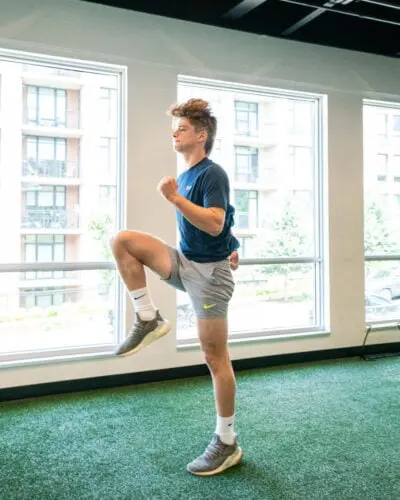In the world of running and endurance sports, the integration of strength training into a regular fitness routine is not just beneficial; it’s essential. This article delves into the importance of strength training for runners, exploring how it enhances performance, the most effective approaches to take, and specific methods that yield the best results.
The Significance of Strength Training for Runners
Strength training goes beyond merely increasing muscle mass; for runners, it’s a critical component in improving overall performance, efficiency, and reducing injury risk. By focusing on core strength, lower body power, single-leg stability, and explosiveness, runners can significantly enhance their running mechanics. This not only leads to faster and more efficient running but also plays a vital role in injury prevention by ensuring the body can handle the repetitive impact of running.
Triple Extension: A Key Focus
A particularly effective method within strength training for runners is the emphasis on triple extension. This concept mirrors a critical moment in running – the propulsion phase, where the back leg pushes off the ground. Triple extension involves the simultaneous extension of the ankle, knee, and hip joints. This action is fundamental to creating a powerful stride transition, thereby enhancing the force generated with each step.
Practical Applications of Triple Extension
Incorporating triple extension into your strength training regimen can be transformative. Here are some practical exercises that focus on this concept:
Wall Load and Lift
This exercise is incredibly versatile, making it suitable for warm-ups, strength sessions, or even as a drill to refine triple extension coordination. It helps in reinforcing the proper alignment and mechanics needed for an effective push-off in running.
Explosive Deadlifts
By incorporating speed and explosiveness into traditional deadlifts, this exercise bridges the gap between standard weightlifting and running mechanics. It emphasizes the power generation aspect of the triple extension, crucial for improving running speed.
Kettlebell Swings
A staple in many strength training programs, kettlebell swings can be particularly beneficial for runners when modified to mimic the running dynamics. By using lighter weights and focusing on swift extension at the hips, knees, and ankles, this exercise directly translates to improved running performance.
Why Strength Training Matters
The benefits of strength training for runners are multifaceted. It’s not just about running faster; it’s about running smarter. Strength training:
- Improves Running Economy: By increasing muscle strength and power, runners can achieve greater efficiency, meaning they use less energy to maintain the same pace.
- Enhances Endurance: Stronger muscles can handle the demands of long-distance running more effectively, delaying the onset of fatigue.
- Reduces Injury Risk: A well-rounded strength training program increases muscle and joint resilience, making runners less susceptible to common running injuries.
Conclusion
Incorporating strength training into a runner’s regimen is crucial for enhancing performance, efficiency, and injury prevention. Focusing on exercises that promote triple extension can significantly improve the power and mechanics of a runner’s stride. By embracing a comprehensive strength program that includes exercises like wall loads and lifts, explosive deadlifts, and kettlebell swings, runners can unlock their full potential. Ultimately, strength training is not just a supplement to running; it’s a cornerstone of a well-rounded running program.
